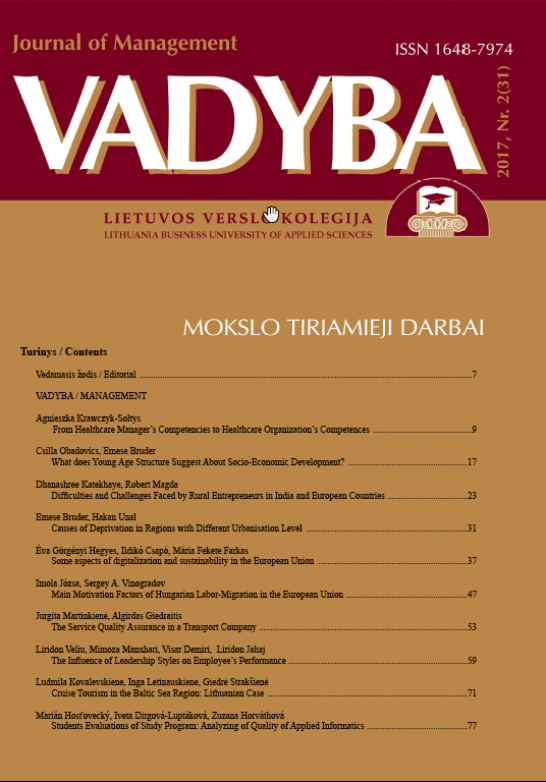CRUISE TOURISM IN THE BALTIC SEA REGION: LITHUANIAN CASE
CRUISE TOURISM IN THE BALTIC SEA REGION: LITHUANIAN CASE
Author(s): Ludmila Kovalevskiene, Inga Letinauskienė, Giedrė StrakšienėSubject(s): Tourism, Socio-Economic Research
Published by: Lietuvos verslo kolegija
Keywords: cruise tourism; cruise tourist; Baltic Sea region; tourism product development; on board/on shore activities;
Summary/Abstract: Worldwide, the cruise industry has had a steady annual growth of passengers since 1990. Expansion strategies to date have been driven by larger capacity ships and their diversification, there are more local ports and a wider variety of destinations on offer, in addition, new on-board/on-shore activities are provided that are able to match customers‘ demands. The article focuses on the cruise tourism situation in the Baltic Sea. Its aim is to reveal peculiarities of Lithuanian cruise tourism in the context of the Baltic Sea region. Statistical data of foreign associations and organisations is analysed and direction of development as well as trends of world cruising is discussed. Moreover, statistical data on cruise passengers in the region is examined. The research was performed using statistical reports and publications as well as other scientific evidence, including Lithuanian tourism law, Klaipėda city marketing and communication strategy and city development plan. The impact of cruise tourism on Lithuania is also discussed. To get a broader picture of cruise tourism in Lithuania, representatives of the agencies organising cruising services were interviewed. This enabled the researchers to learn about the supply of services available for the tourists and pointed out the main issues that cruising businesses might face developing cruising products in Lithuania. The notion of cruise tourism is comparatively well developed in European tourism documents, however Lithuanian documents lack a targeted strategy that would aid the country‘s cruise tourism development. At present, products that are offered for cruising tourists on shore are saleable and receive good reviews, nevertheless there is still a gap in the market for more interesting excursions as well as specialised tourism products such as culinary and family packages or entertainment, spa or ecotourism products. The interview revealed that there is not enough cooperation between the organisers of cruise tourism and the local authorities, this is a major hindrance for the successful development of cruise tourism in Lithuania. Sometimes, however, Lithuanian cruise tourism stands out in the European context where a decrease in the number of tourists is noticeable. In Lithuania, this number is steady and this proves the popularity of the region and it can be assumed that the region is in a stable position and will keep attracting a flow of cruise tourists. Nonetheless, world trends should be considered and it is essential to promote cooperation between businesses and public sector, new ways of satisfying growing needs of tourists have to be taken into account in order to maintain a stable position in the market.
Journal: VADYBA
- Issue Year: 31/2017
- Issue No: 2
- Page Range: 71-75
- Page Count: 5
- Language: English

